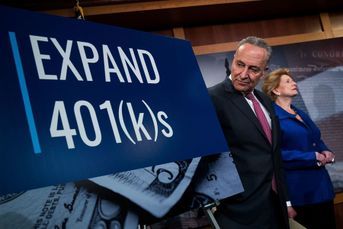How advisers can manage IRA rollover risk under the DOL fiduciary rule
Analyzing rollovers could involve some challenging steps, like gathering information about investments, services and expenses in the retirement plan.
Advisers need to examine their practices for IRA rollovers in the new fiduciary environment created by the Department of Labor’s conflict-of-interest rule.
As background, there are three ways an adviser can help a participant with a rollover. Those are:
• Unsolicited
• Education
• Recommendation
The third point — a recommendation — is a fiduciary act. The first two are not; however, for those, advisers should document that the rollovers were unsolicited or were based on education and, therefore, did not result from a fiduciary recommendation.
An unsolicited rollover is one where the participant has made the decision to roll over from a workplace retirement plan to an IRA, without input from the adviser, and then asks the adviser for help with investing the IRA. For risk management purposes, the adviser should have the participant sign a statement to that effect as a part of the account opening process.
For the second alternative, investment education, the key is to provide unbiased and relative information about the options available to a typical participant and the considerations for and against each of those options. The options generally available to participants are: to leave the money in the plan, transfer it to the plan of a new employer, take a taxable distribution, or roll it to an IRA.
(More: DOL fiduciary rule: Challenges for RIAs under the BICE)
Again, an adviser should have the participant sign a statement that the participant received education about his or her options, but that the adviser did not make a recommendation.
The third alternative — a recommendation to roll over to an IRA with the adviser — is a fiduciary act and involves complex considerations. In this case, the adviser must gather and consider information about, at the least, the retirement plan’s investments, expenses and services, as well as information about the investments, expenses and services in the rollover IRA. Those factors should be evaluated in light of the investment objectives, financial circumstances, risk tolerance and needs of the participant. That evaluation must be done in a knowledgeable, prudent and loyal manner.
After the analysis, a distribution and rollover should be recommended only if it’s in the best interest of the participant. In other words, if it would be better for the participant to leave the money in the plan, the adviser must make that recommendation.
(More: Transfers of IRAs in the new fiduciary world)
As a practical matter, the most difficult step has been gathering the information about the investments, services and expenses in the plan. Of course, that’s not a problem when the adviser also works with the plan, but it is when the adviser does not.
In the latter case, an adviser could obtain the information from the participant through, for example, the investment disclosures given to the participant by the plan — the 404a-5 disclosures. The Department of Labor’s position is that it is easy to obtain that disclosure form; as a result, it is risky to make a rollover recommendation without considering plan-specific information.
However, where a participant is unable or unwilling to provide the information, there are alternatives. For example, an adviser can use benchmarking information for plans of the type and size as the participant’s plan. But, the alternatives can only be used after the participant is warned about the risks of using alternative data.
If the information is properly gathered and considered, the biggest hurdles occur when the plan expenses are much less than those in the proposed IRA. In those cases, the analysis will often turn on the differences in services. For example, if the expenses in the IRA are 1% per year more than the plan (considering investment, advice and administrative costs), a critical question is whether the value of the adviser’s services to the IRA are sufficient to justify the cost differential. While it may be difficult to precisely quantify the value of the services, an adviser must be able to reasonably justify the additional costs in light of the needs of the participant and the value of the services to that participant.
If an adviser focuses on providing a range of valuable services to IRA owners, and particularly to retirees, the considerations can weigh in favor of recommending rollovers. Those services could include, for example, financial planning, help with required minimum distributions, investing for sustainable lifetime income, and annual in-person reviews.
Fred Reish is a partner at the law firm Drinker Biddle & Reath.
Learn more about reprints and licensing for this article.







